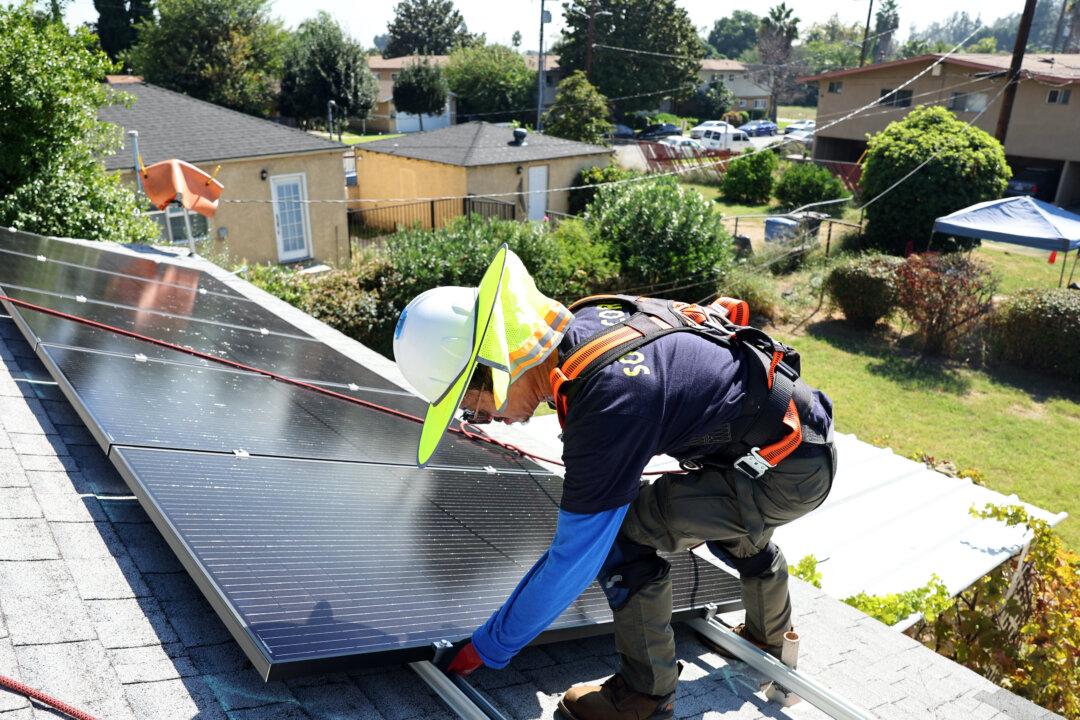California’s decision to change how much customers make from solar energy, which took effect last April, has pummeled the rooftop solar industry in the state, and industry experts expect a nearly 41 percent drop in sales this year.
“We expect installations to fall off sharply in 2024,” Solar Energy Industries Association spokesman Morgan Lyons, a national solar-energy industry trade association, told The Epoch Times.





